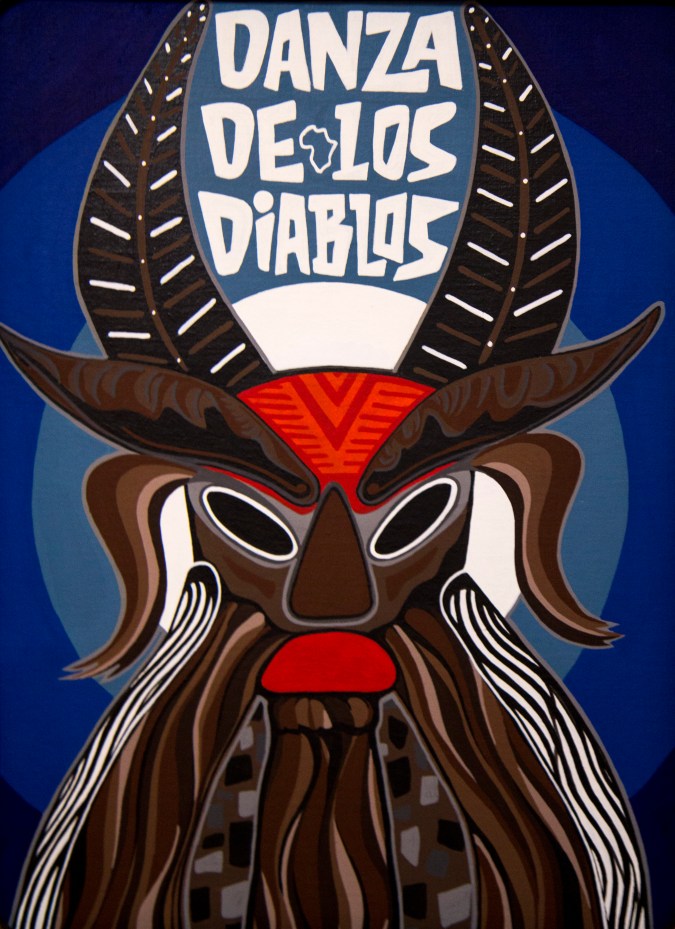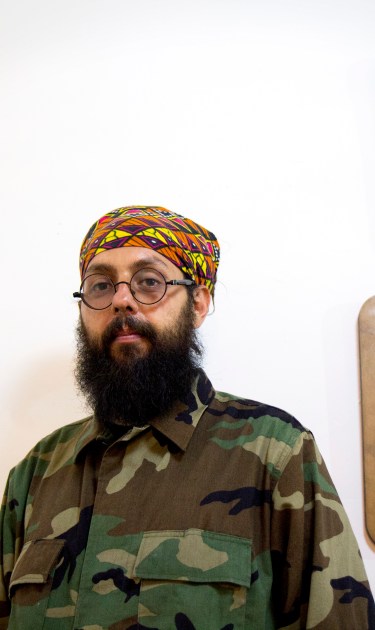In Mexico, a country whose national identity is centered in mestizaje, blackness and Africanity have historically been left out of the mix. But recently, movements have arisen to create more visibility for the Afro-Mexican population, including a push for legal recognition of Afro-Mexicans in Mexico’s national constitution.
In the arts, there is also a brewing movement to make space for more black Mexicans. For more than 15 years, Mexican musician, painter and rasta Ras Levy has promoted black visibility in Mexico through his artistic practice– exploring themes of blackness in his music, and painting murals at schools on the Costa Chica of Oaxaca.
Now, in a new exhibition titled “Mexico Negro,” Levy is paying homage to historical and mythical characters tied to Mexico’s legacy of blackness. This includes legends like “La Mulata de Cordoba,” a woman healer from Veracruz who was tried and sent to prison during Mexican Inquisition. As the legend tells it, she escaped by sketching a boat onto the prison wall and jumping directly into her drawing, never to be seen again.

We sat down with Levy to learn more his exhibition, and his focus Africanity in Mexico, which for him is “an expression that goes beyond skin pigmentation.”
What made you come up with the idea for this exhibit?
My principal idea for this work was to make a continuous creation that, in conjunction with other disciplines, creates spaces for the diffusion of black culture in Mexico beyond borders and limits.
The importance of this exhibit is that the [opening] event is part of the art itself – art needs to socialize, to expand and recreate itself from the first stroke. This is why we are having music, discussion and pachanga, to expand on the art and recognize ourselves in it. We decided to do this exhibition to subvert and revolutionize certain conceptions brought forward by academia.
People of color in Mexico have stories to tell from our own point of view, not from the colonial point of view.
You paint portraits of characters who are not widely known in the history of Mexico’s blackness. What story are you trying to tell with your art?
We are trying to tell a story that is more authentic than the one told by the Eurocentric system. That is to say, we want to break the paradigm of white supremacy and show that that Black people, Indigenous people and other people of color in Mexico have stories to tell from our own point of view, and not from the colonial point of view.
Let’s take Emiliano Zapata for example. Zapata signifies a lot for Mexicans – his fight was relevant. But not everyone knows that Zapata had some African heritage or that his pueblo was the home to several Afro-Mexicans. This type of invisibility is what my work aims to [counteract], show[ing] a more authentic reality of these characters and stories.
Your music also touches themes of blackness and black culture. What have been your influences for creating art in different mediums?
I’ve been doing music professionally for about 15 years, but I’ve always been making art professionally since I was a child. I used to draw in notebooks when I was a kid. When I got older, those drawings turned into graffiti paintings. My music first started on the streets, rapping with my friends. We built coalitions, and now have made a name for ourselves today.
How would you describe your style and how it relates to your creative process?
I’d say my painting style is like the Dub music genre. In Dub music, which grew out of reggae, the sound engineer is the protagonist; they remix existing samples to create a new sound. Similarly, in my art I take elements that have already been created and re-envision them through colors, strokes, history, spirituality, etc. I recycle and recreate to make something original and authentic. Fundamentally, my style is experiential and is constantly evolving.

What do you have planned for the future and how do you see the future of the representation of black culture in Mexico?
From my point of view, I see the future of black representation in Mexico having one destiny. That is, that black people in Mexico and the rest of the diaspora will make progress toward more unity as one people, or as Marcus Garvey put it, one African Nation. With more unity, black communities will have more autonomy to reclaim the representation that was taken from them through white supremacy and colonialism.
In terms of my personal projects, I just plan to continue managing spaces to show my art here in Mexico City, in Afro-Mexican spaces, or anywhere where people are willing to experience it.
Mexico Negro is on exhibition through May 31st at Rollos Chilangos in Mexico City.




